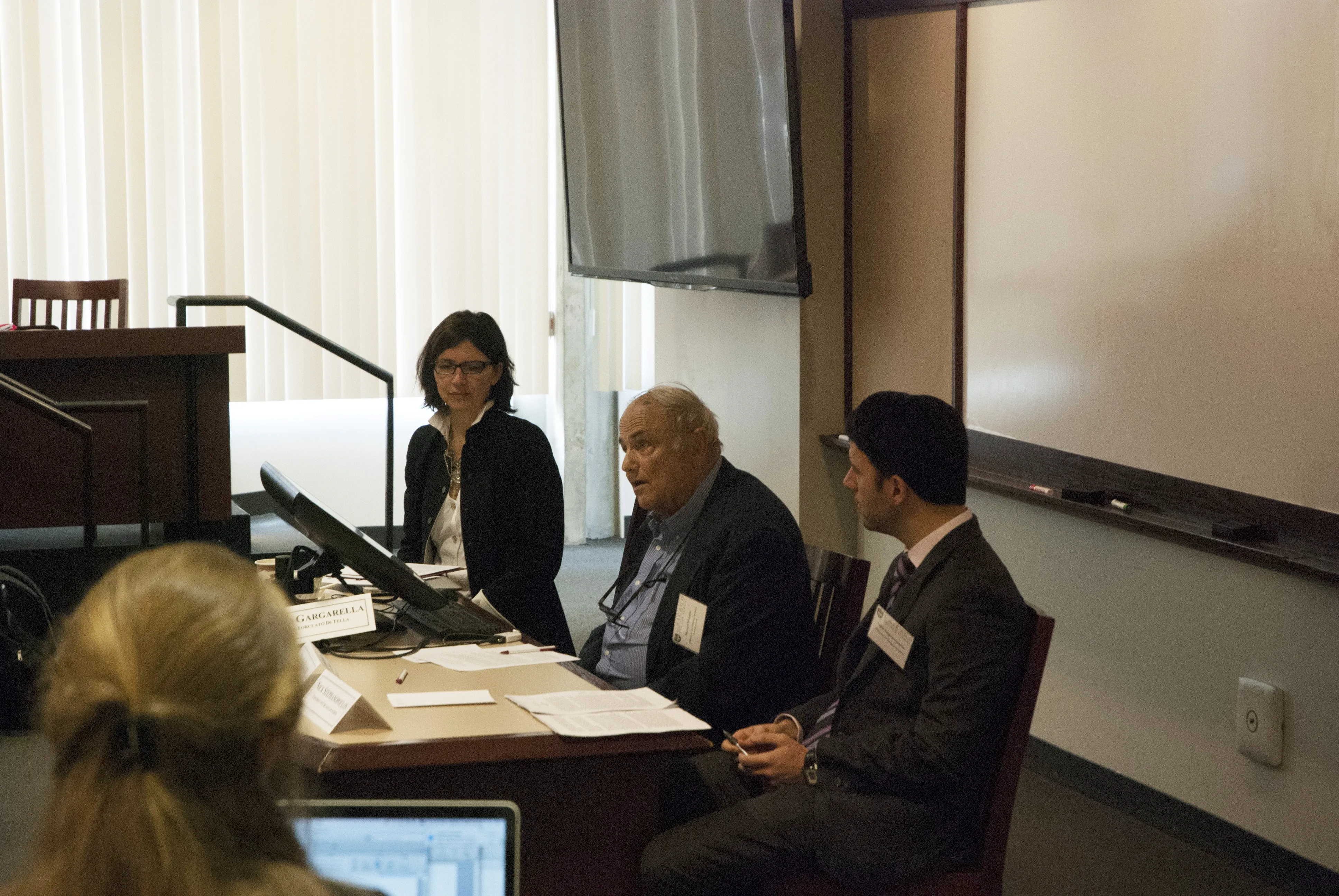How Constitutions Succeed: Defining and Assessing Constitutional Performance

Constitutional law scholars and practitioners from across the country and world gathered for two days of discussion on defining and assessing constitutional performance. Spearheaded by Deputy Dean Tom Ginsburg, the Leo Spitz Professor of International Law, and Professor Aziz Huq, a Marjorie Fried Teaching Scholar, the conference posed questions about the constitutional drafting process in transitioning and shattered states and the role of constitutions in political reconstruction.
“There is a lot of intuition and commentary out there about constitutions working or not working,” Ginsburg said, “but very little in the way of rigorous analysis. It’s a complicated question.”
States are increasingly using the constitutional process as a central element of rebuilding governments. However, questions remain about the appropriate factors to consider in measuring outcomes of the constitutional method. The conference focused on developing a theoretical framework and tools that would provide constitutional drafters with an understanding of the impact of their design choices. Ginsburg and Huq posited four factors that they believe would lead to a successful constitution: legitimacy in the eyes of the public, the channeling of political conflict through stable institutions, limiting agency costs of government, and the ability to create public goods. “All these factors are interrelated,” Huq said.
However, other presenters acknowledged that the factors used to assess constitutional success or failure will depend on the context and the specific purpose the constitution plays in a particular country. Whether it is to end a civil war or to integrate previously disenfranchised social groups, unique driving forces influence every constitution. The challenge of the conference was to determine how and when to measure the success of these texts to determine if they have met their specific goals.
Attending scholars also presented papers on various topics. Some, for instance, compared constitutions across nations, and others involved in-depth case studies such as the “crowdsourcing” constitution of Iceland. The attendees discussed how to operationalize rights protection, when to measure constitutional performance, and how to know if the constitution itself is the reason we would observe changes in a particular nation. For example, Assistant Professor Adam Chilton and University of Virginia Associate Professor Mila Versteeg assessed whether six political rights enshrined in constitutional texts actually changed government behavior in practice. Using an identification strategy and regression techniques, they calculated countries’ yearly constitutional “ideal point.” From this empirical data, Chilton and Versteeg compared rights within constitutions of similar paired countries in order to draw theoretical inferences.
The presenters also debated whether it is sufficient to look solely at a constitutional text without considering other factors, such as political parties, that may influence constitutional performance. Assistant Professor Nicholas Stephanopoulos indicated that a constitutional text itself might not be sufficient as a benchmark for assessing success. Confounding variables such as electoral features, economic indicators, and national features of a state are other factors that could account for success or failure.
Ginsburg, along with Zachary Elkins, an Associate Professor at the University of Texas at Austin, and James Melton, a Senior Lecturer in Comparative Politics atUniversity College London, direct the Comparative Constitutions Project, which investigates the sources and consequences of constitutional choices.
A book will be produced based on the papers presented.


